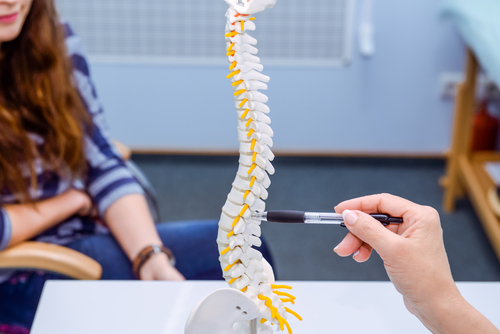SMA Patients Don’t Need Higher Radiation Doses in CT-guided Spinraza Injections, Study Says

Diagnostic reference levels indicate that people with spinal muscular atrophy (SMA) do not require higher radiation doses to monitor the administration of Spinraza (nusinersen) in the spinal canal, despite having severe anatomical alterations, a study says.
The study, “Radiation exposure of image-guided intrathecal administration of nusinersen to adult patients with spinal muscular atrophy,” was published in Neuroradiology.
SMA comprises a group of neurodegenerative disorders characterized by the gradual loss of motor neurons — the nerve cells responsible for controlling voluntary muscles — in the spinal cord, leading to muscle weakness. It is normally caused by mutations in the SMN1 gene, which provides instructions for making the SMN protein that is essential for motor neuron survival.
Spinraza is a treatment marketed by Biogen that works by increasing production of the SMN protein by the SMN2 gene — a gene similar to SMN1, usually unaffected in patients with SMA.
Because Spinraza cannot cross the blood brain barrier (a highly selective, semipermeable membrane that isolates the brain from the blood that circulates in the body), the medication must be administered by injection into the spinal canal.
“Severe scoliosis and spinal torsion pose a challenge for [spinal canal] drug administration. Therefore, it is often necessary to rely on image guidance for successful intrathecal [lumbar] punctures, accomplished by CT (computed tomography) or fluoroscopy,” the investigators said.
“Since [Spinraza] therapy should be started before the development of a life-impairing muscular atrophy, SMA patients are often in infancy or adolescence. At the same time, CT-guided interventions inevitably comprise a certain amount of radiation exposure and therefore [pose] radiation risks,” they said.
In this study, researchers from the University Hospital Essen (Germany) evaluated radiological parameters in SMA patients who received CT- or fluoroscopic-guided Spinraza injections into the spinal canal.
The study involved 14 patients — nine with type 2 SMA and five with type 3 SMA — with a mean age of 33.6 years old, treated between August 2017 and June 2018. In all, 60 CT-guided Spinraza treatments were performed and analyzed in the study.
Interested in SMA research? Sign up for our forums and join the conversation!
Radiological parameters included diagnostic reference levels (DRLs, optimal radiation doses), achievable dose (AD, an additional benchmark to optimize radiation doses), and size-specific dose estimates (SSDE, which estimates radiation exposure taking into account the size of the patient). The effective dose — the sum of radiation doses absorbed by all the organs in the body — and individual organ radiation were also calculated.
DRL and AD values for CT-guided Spinraza injections were consistent with findings from a previous study.
No significant differences in radiation exposure were found between patients with type 2 and type 3 SMA, suggesting that SMA severity does not have a significant impact on the amount of radiation required to perform image-guided injections. However, patients who had spinal fusion (a surgical procedure that fuses spine vertebrae to stabilize the spine and reduce pain) required higher radiation exposure compared to those who did not have spinal fusion.
The mean effective dose of all CT-guided Spinraza injections was 2.5 mSv (millisievert). The most important organs with the highest radiation doses were the small intestine (12.9 mSv), the large intestine (9.5 mSv), ovaries (3.6 mSv), kidneys (3.4 mSv), uterus (3.0 mSv), skin (2.2 mSv), and red bone marrow (2.8 mSv).
“The assessment of DRLs and ADs is essential for dose monitoring and optimization. Despite severe anatomical hazards, the present DRLs show that radiation exposure of SMA patients is generally not higher compared with patients without SMA,” the scientists concluded.







